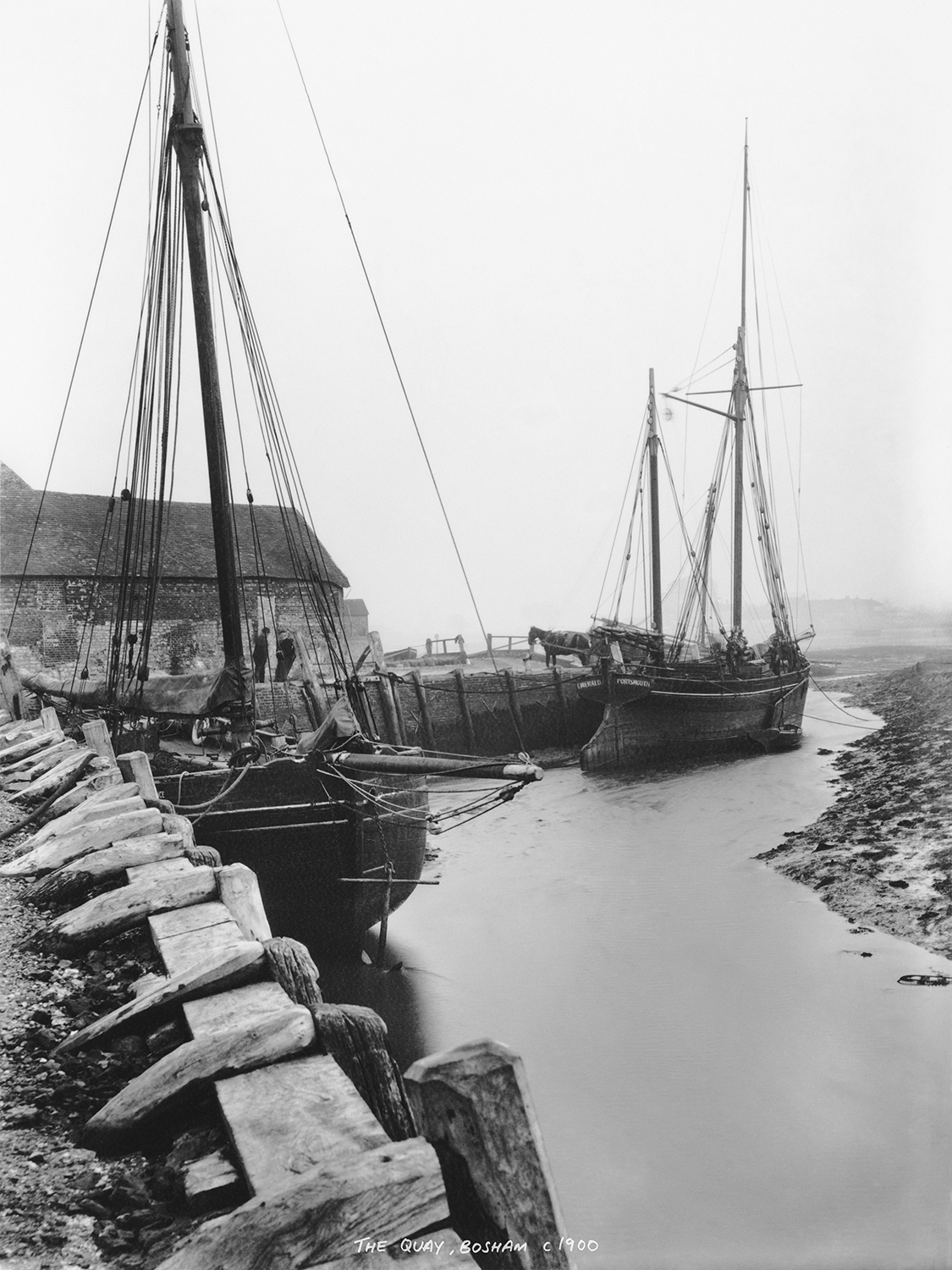Bosham Gallery Archive
Prior to 1900, Bosham had been a thriving commercial port for freight transport along Britain's coastline for over 300 years. This photograph captures two trading ketches tied to Bosham Quay being unloaded by horse and cart at low tide. On the left, two mariners can be seen leaning against the oak piles of the Quay, chatting.
The fame of the good quality, high-yielding grain of the Bosham farmland, due to the above average sun hours and good fertile soil, has been known since Roman times. Bosham's outgoing sea trade from the seventeenth to the nineteenth century was based predominantly on wheat and maize, ground in one of the many local mills, most of it transported around the English coast by 30-ton ships.
Bosham's trading ketches were the lorries and trucks of their day, and were complete workhorses. They carried tons of essential cargo along the south coast. At Bosham, their holds were filled with grain for West Country ports and for ports in Kent. Some travelled up the east coast of England, some as far as Newcastle. Boats sailing to the West Country returned with granite and slate, and those to Kent ports and Newcastle returned with coal. By the mid nineteenth century, Bosham was handling a great variety of incoming goods, and the 1851 Table of Tolls payable to the Lord of The Manor of Bosham lists 48 items including oil, tar, iron, timber, sand, leather hides, wine, hops, cloth, bacon, butter, and so on.
© Luke Whitaker
